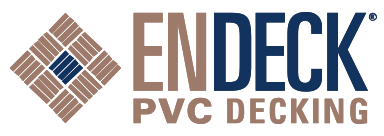You Deserve the Best for Your Deck
In recent years, homeowners have gravitated towards lower-maintenance composite decking for their outdoor living spaces. However, before investing in what could be the last decking decision you ever make, there may be an even better choice.
You Don’t Have to Settle When It Comes to Quality Decking
Just as homeowners once accepted that continually staining and replacing warped and rotten wood boards were simply part of owning a deck, composite decking has been widely accepted as the alternative to pressure-treated lumber.
While it’s true that composite decking addressed many of the frustrations with traditional wood decks, there are still many cons that leave homeowners and contractors wishing there was yet an even better alternative. Now, there is.
Common Concerns of Composite Decking
Composite decking refers to engineered boards constructed of a combination of recycled wood and plastic fibers. This construction eliminated many of the problems with traditional wood deck boards but because it still contains wood and other organic fibers, multiple concerns remain.
Some of the most common issues with composite decking include the following:
- Water retention – Composite decking still has natural fibers, including wood flour. As a result, it may be water-resistant but is not waterproof and can not withstand exposure to ground contact.
- Delamination – When wood fibers in composite decking get wet, they can swell and increase the dimensions of a board. When the sun comes out, they then contract. This can cause the glue bond that holds the fibers together to fail, leading to splitting and delimination.
- Susceptibility to mold and mildew – The wood flour in composite decking doesn’t have the same natural protection against fungi as traditional wood decking, which actually makes it more susceptible to mold and mildew in some environments.
- Expansion and Contraction – Composite decking also contains plastic. While wood boards primarily expand and contract across the width of the board, the combination of wood and plastic means composite boards expand and contract through both the width and length of the board, which can lead to unsightly and unsafe gaps over time.
Moisture and wood simply don’t mix well together. However, there is a decking material that combines all of the benefits of composite and traditional wood decking – with none of the concerns.
Discover the Strength and Durability of Endeck PVC Decking
Where wood and moisture meet, trouble soon follows. However, with Endeck PVC Decking there are no wood or organic fibers; therefore, there is no rot, mold, or mildew. This not only eliminates many of the concerns that plague composite and traditional decking, but it also provides an even greater opportunity for a wider variety of applications.
Endeck boards are strong, durable, and engineered to resist fading and staining. In addition, they are lighter in weight than composite, capped composite, or treated wood deck boards. Endeck PVC decking is slip resistant, has low heat build-up, and is virtually unaffected by moisture. In fact, Endeck loves water and can even float.
Luxurious Beauty Without the Hassle of Composite Decking
That sounds great but what about the warmth and beauty of traditional wood decking?
Endeck and Woodland Series offer several rich, dark colors with deeply embossed grain that echoes all the beauty of natural wood. Endeck’s Forest Series even features the same subtle variations in color that can only be found in the most exotic hardwoods.
That’s right. You can have it all – strength, durability, and luxury. Our confidence in the quality of Endeck decking is reflected in our lifetime warranty. You can continue enjoying a luxurious deck for years to come without the hassle of constant maintenance. Isn’t that what it’s there for after all?
Learn to love your deck again. Contact the helpful and experienced team at Endeck to learn how Endeck PVC Decking can help.



